Switched Resistor Input Impedance
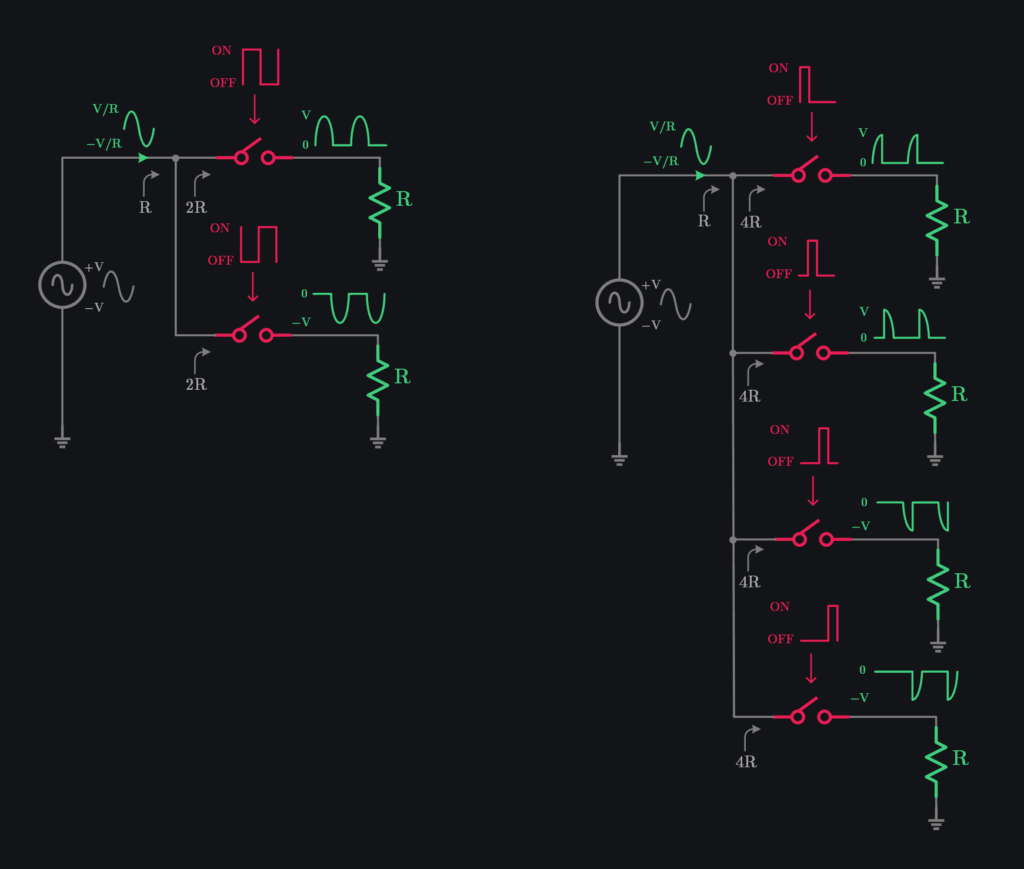
We saw that you can transform R to 2R at \(\omega_{IN}\) if you add a switch in-between and toggle it with 50% duty cycle. What if changed duty cycle to 25%? We would see 4R at \(\omega_{IN}\). This means we can transform to any higher impedance; all we need is to choose duty cycle.
BJT design
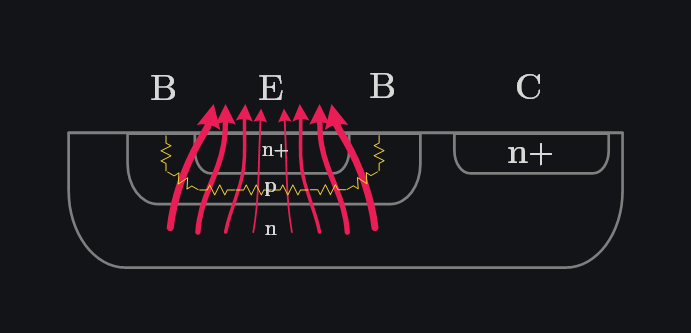
Collect all the minority carriers injected by emitter without getting them lost on the way through recombination. In circuit terms, we call it collector current should be equal to emitter current.
Minimize hole injection from base to emitter and reverse bias currents of B-C junction as they do not contribute to collector current. In circuit terms, we say base current should be zero.
ft vs fmax
(f_tau) vs (f_{max}) A device designer tweaks transistor and optimizes (f_tau) whereas an IC designer tweaks circuit and optimizes (f_{max}). But why are there two different metrics, and which one should you use? What is the difference between (f_tau) vs (f_{max})? Let’s dive right in. What is (f_tau)? The concept of (f_tau) was introduced by […]
How Does a BJT Work? Device Physics Explained for IC Designers
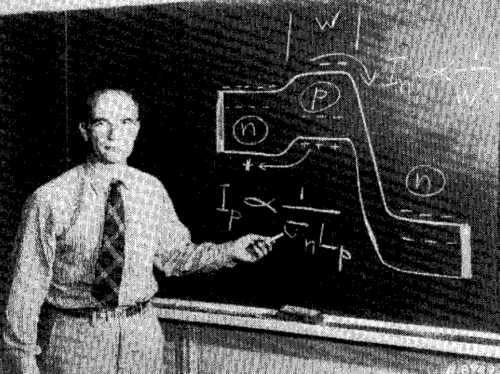
Let us travel back in time to Christmas of 1947—the point-contact transistor has just been invented, and intense experimentation at Bell Labs has revealed a critical insight: if you inject minority carriers into a semiconductor, you can achieve amplification. But how does it work?
The Invention of the Transistor: A Step-by-Step Breakdown
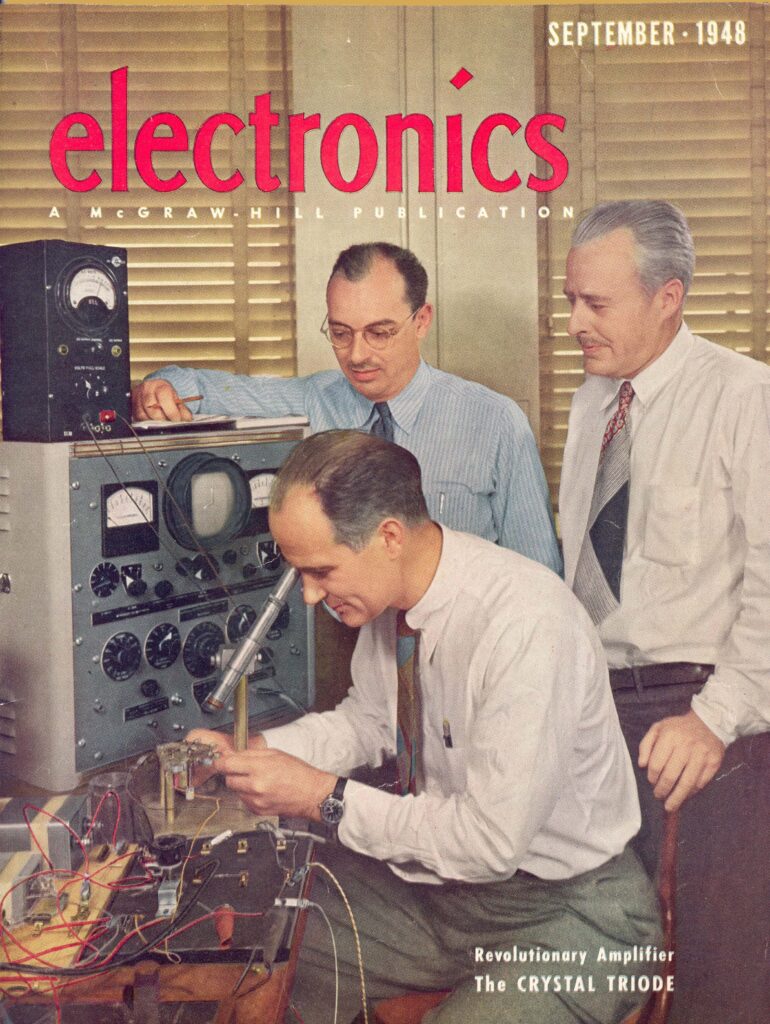
This new finding was electrifying. At long last, Brattain and Gibney had overcome the blocking effect of the surface states—the practical problem that had for so long caused the failure of our field-effect experiments.
PN Junction
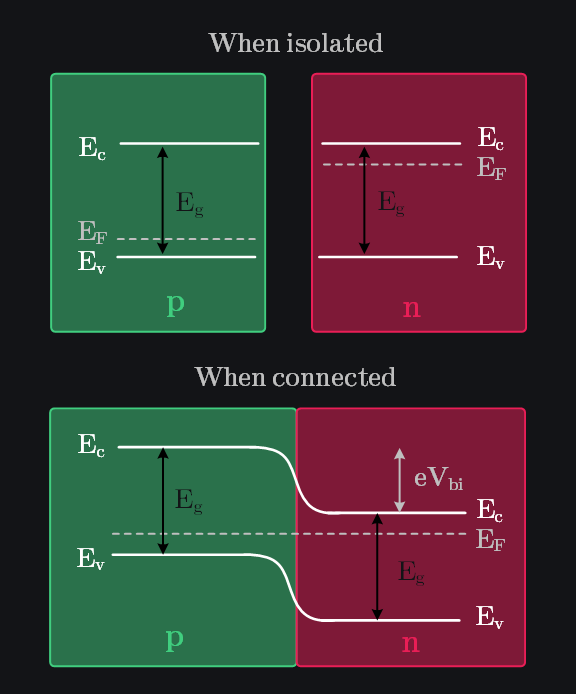
Since band diagrams represent electron potential energy, this is reflected in the upward bending of the conduction band in the p-region. The built-in electric field opposes further electron diffusion from n to p, creating an energy barrier. This results in the conduction band bending downward in the n-region.
Carrier Transport
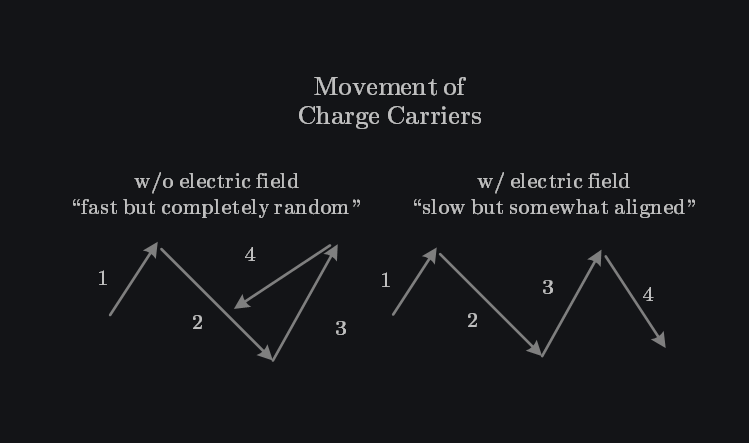
In lightly doped semiconductors, lattice scattering dominates, and the carrier mobility decreases with temperature. In general, the trend is decrease in mobility with higher temperature and with higher doping.
Intrinsic Carrier Concentration
A key nuance in the derivation of intrinsic carrier concentration is that it assumes thermal equilibrium—meaning the carrier concentration remains constant over time. But how does this make sense? We’ve established that electrons are continually being thermally excited from the valence band to the conduction band due to random thermal processes. If this generation kept happening unchecked, electrons would accumulate in the conduction band and holes in the valence band, driving the system out of equilibrium.
Energy Bands
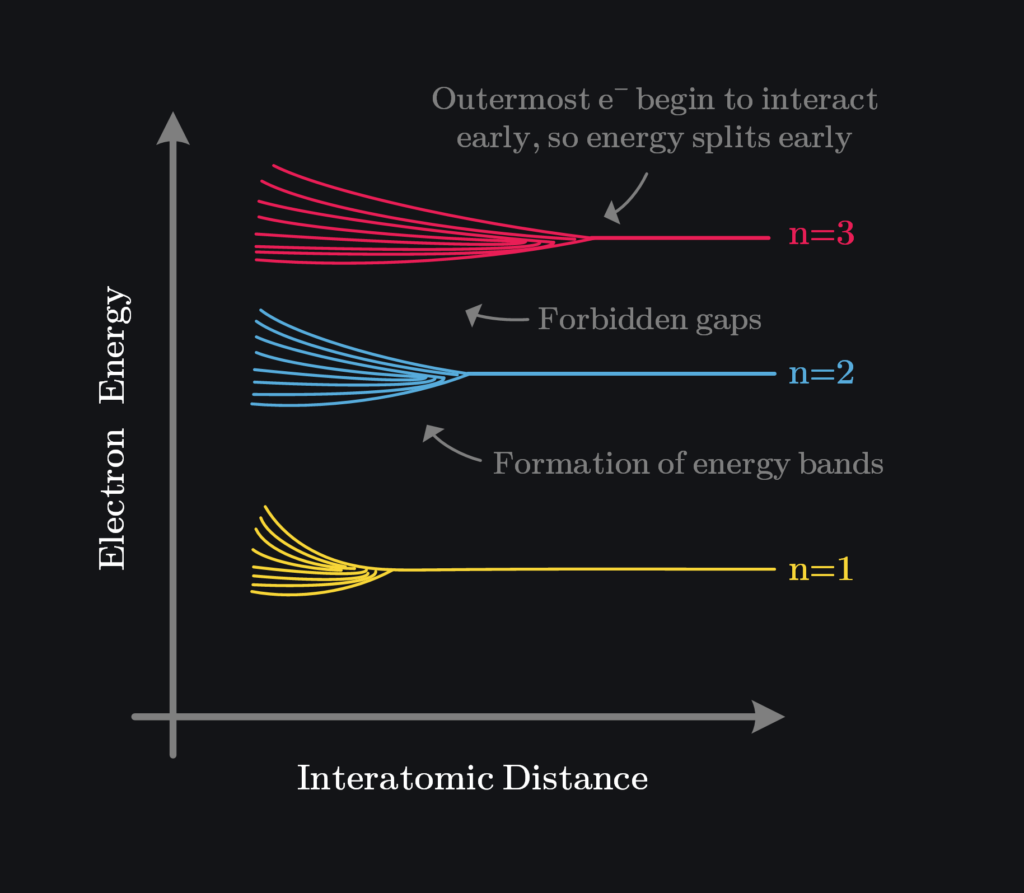
Intuitively, if two atoms were close enough and their electrons remained at the same energy level, it would violate the Pauli Exclusion Principle, which states that no two electrons can occupy the same quantum state. Therefore, the energy levels split, ensuring each electron has a unique quantum state.
Quantum Physics
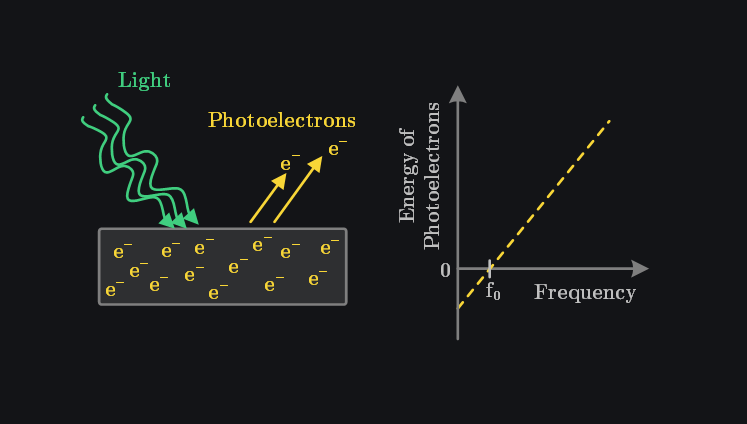
The uncertainty principle serves as a fundamental safeguard of quantum mechanics. Heisenberg realized that if it were possible to measure both the position and momentum of a particle with perfect accuracy, the entire framework of quantum mechanics would fail.